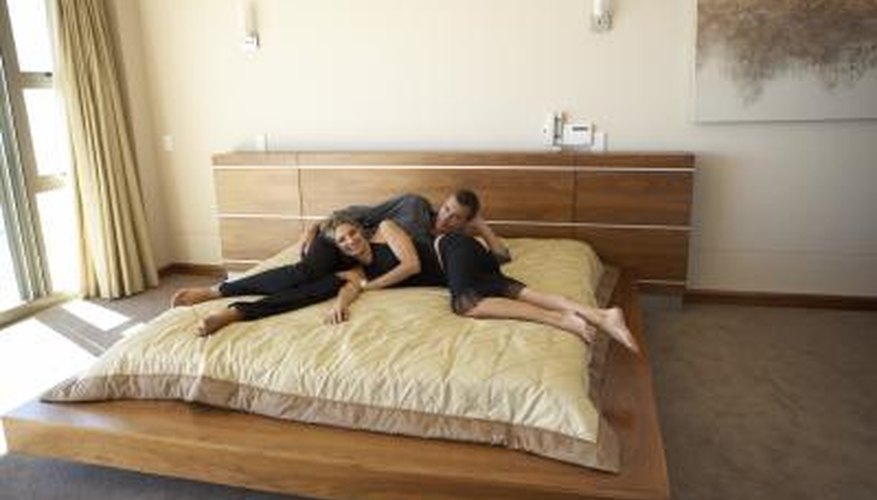A blackout curtain is made using a type of fabric that prevents light transmission. This type of fabric is often used as a liner on bedroom drapes where the control of light is important for sleeping. Blackout curtain fabric is typically sold in white and off-white colours and is occasionally paired with a thermal material to control heat loss through a window. Drapes with blackout linings are more costly than those with standard lining fabrics.
Blackout Fabric
Most blackout fabrics are vinyl or a blend of polyester and cotton (70/30). Vinyl tends to crack or bubble over time as the vinyl is exposed to sunlight. Cleaning the vinyl may also present problems since it is not acceptable for dry cleaning when most drapes are best cleaned by dry cleaning. For this reason, the blends are usually a better choice. Polyester and cotton can be dry cleaned and will not crack or bubble as they age.
- Most blackout fabrics are vinyl or a blend of polyester and cotton (70/30).
- Vinyl tends to crack or bubble over time as the vinyl is exposed to sunlight.
Liner
The liner on drapes is sewn into the back side of the drapery fabric. The liner is shorter than the bottom edge of the drape to hide the lining from the view in the room. A drapery with a blackout lining should be mounted so that the sides of the drapery extend several inches beyond the glazing of the window, which will prevent light from seeping around the edges of the drape.
Traverse Rods
The best choice for limiting sunlight is by pairing the drapes with a box-style traverse rod and pleated drapes. A cornice box should be installed over the top of the window treatment to catch any escaping light through the top edge of the drapes. The traverse rod allows the sides of the drape to wrap back to the wall and for the inside edges of the drape to overlap when the drape is closed, which will provide maximum light blocking.
Face Side
Blackout fabric isn't black. Both sides of the fabric are white. One side has a finish and the other side doesn't. The finish is sewn to the outside, which means the finish will be closest to the window when the drapery is hung. All drapery liners are designed for the finish side out on the finished curtain. While liners are seldom visible when the drape is properly hung, they are seen on occasion and the drapery designer wants the liner to look good in those moments. The fabric is also designed to function properly with the face side out. If you have a rubbery side, it should be inward, facing the back of the decorator fabric.
- Blackout fabric isn't black.
- The finish is sewn to the outside, which means the finish will be closest to the window when the drapery is hung.
